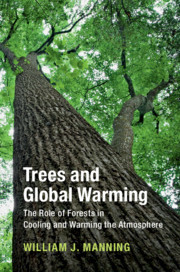Description
Trees and Global Warming
The Role of Forests in Cooling and Warming the Atmosphere
Author: Manning William J.
Looks at the question: do forests cool or warm the atmosphere and reduce global warming?
Language: English
Subject for Trees and Global Warming:
Approximative price 68.81 €
In Print (Delivery period: 14 days).
Add to cart
Publication date: 07-2020
338 p. · 15.7x23.5 cm · Hardback
338 p. · 15.7x23.5 cm · Hardback
Description
/li>Contents
/li>Biography
/li>
Large-scale tree planting is advocated to provide additional atmospheric cooling and further reduce global warming. This raises a question about the present time: do trees cool or warm the atmosphere? This question does not have a simple yes or no answer. Examination of the greenhouse effect, global warming and the carbon cycle, and how trees and forests function provides the basis for understanding how forests might cool or warm the atmosphere. Results from research and models indicate that cooling or warming depends on where forests are located and the type and color of trees. Cooling generally prevails over warming, but this may change. This book will appeal to anyone interested in climate change, ecology and conservation.
1. Global warming and forests in the Anthropocene; 2. The gases that cause the greenhouse effect; 3. Carbon and photochemical oxidant cycles; 4. Biogeochemical and bio geophysical factors that affect trees; 5. Trees in a warming world; 6. Forests of the world; 7. Knowledge base for forests in cooling and warming; 8. Mitigating global warming by forests; 9. Bringing it all together.
William J. Manning is Professor Emeritus in the Laboratory of Plant Environmental Biology at the University of Massachusetts, Amherst. His research interests are in plant responses to ambient and elevated CO2 and ozone, urban plant biology, and plants as indicators of ambient ozone. He has published extensively in the primary literature. His teaching has focused on courses in Air Pollution and Climate Change Biology and Urban Plant Biology. He was a member of the US EPA's Clean Air Scientific Advisory Council (CASAC). He is the former Editor-in-Chief of the journal Environmental Pollution.
© 2024 LAVOISIER S.A.S.
These books may interest you

Forest Development in Cold Climates 210.99 €



